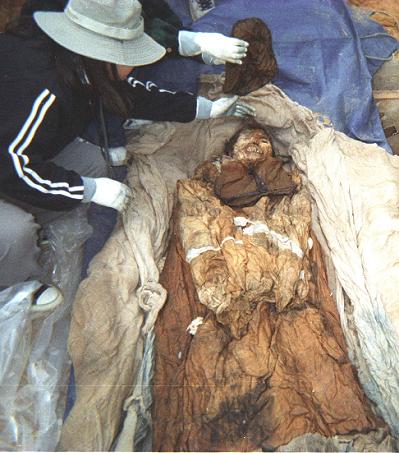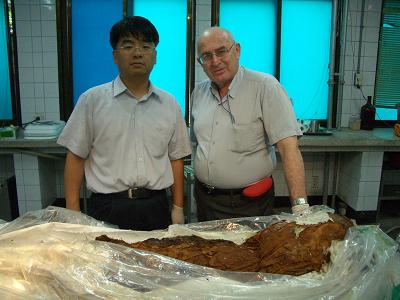Mummies recently discovered in South Korea may provide clues on how to fight hepatitis B viral hepatitis, states a study by Prof. Mark Spiegelman of the Covin Center for Infectious and Tropical Disease Research at the Hebrew University

For the first time, samples of viral hepatitis B were found in a mummified body. When they discovered the virus in the liver of a child who died five hundred years ago, researchers at Dankuk University and Seoul National University invited Prof. Spiegelman to South Korea to verify the findings.
Now Prof. Spiegelman from the Hebrew University and the liver unit at Hadassah Ein Kerem Hospital in Jerusalem are part of an international team leading research on mummies, together with experts from Dankook University, Seoul National University and University College London. Spiegelman is known for his pioneering research into infectious diseases found in mummified bodies from Hungary to Sudan, and for his search for an answer to the development of diseases that still attack us today, such as tuberculosis, leishmania and influenza. The South Korean mummies are especially preserved and can provide vital information regarding the development of the hepatitis B virus.
International murderer
Viral hepatitis B causes liver problems and can lead to liver cancer or liver failure. About a million people die from it every year in the world. In South Korea, the need to control the virus is particularly significant, in a population of which 12% are carriers of hepatitis (compared to the global average of 5%). In China, the virus is considered a major cause of cancer.
Korean mummies?
Until recently no one knew about the existence of mummies in Korea. The ancient Korean tradition of ancestor worship and the belief that at death the soul ascends and the body returns to its natural components, without outside intervention, meant embalming was abhorred in Korean culture. However, with the takeover of the neo-Confucian Joseon dynasty in 1392, there were changes in the ancient Buddhist burial customs.
The burial process included placing the body on ice for three to thirty days during the mourning period, placing it wrapped in shrouds in a coffin made of pine inside and out, and covering the coffin with a mixture of soil and lime. "In some cases, all of this ended up being distracted by a pretty good natural embalming," Spiegelman says.
The growth and spread of construction in South Korea resulted in the copying of many cemeteries and led to the discovery of the mummified bodies.
Know the enemy

The researchers plan to study the genome of the five-hundred-year-old virus to see if there have been any real changes during that time. Spiegelman wonders, “Five hundred years ago, was it hepatitis B? Could it have later split from 'X' into A and B? Was it already developed? We don't know that.
"This is a 'Know the Enemy' mission that hopes to reach information that will help the patients of today and tomorrow," says Prof. Spiegelman. He believes that knowing how the virus worked five hundred years ago will help us understand what the virus will do if it continues to develop, and may eventually also change the approach of public health officials to fighting the virus.

2 תגובות
Great
My elementary school literature teacher looked quite similar to this mummy, and if I remember correctly she also taught us how to fight viral hepatitis or something like that.
There is nothing new under the sun.